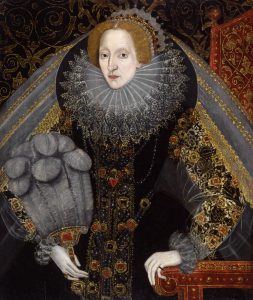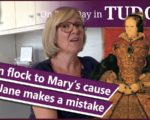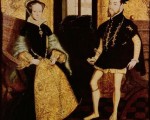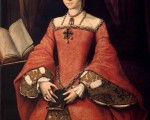 In this week's Claire Chats talk, I am continuing my series on the Tudor monarchs, and examining their reigns for "the good, the bad, the ugly", i.e. their achievements and the not-so-good stuff, by looking at the reign of Queen Elizabeth I, who ruled from 1558 to 1603.
In this week's Claire Chats talk, I am continuing my series on the Tudor monarchs, and examining their reigns for "the good, the bad, the ugly", i.e. their achievements and the not-so-good stuff, by looking at the reign of Queen Elizabeth I, who ruled from 1558 to 1603.
Now, I've already handled this topic, in regards to Elizabeth I, back in 2018, so below you will find my previous Claire Chats. But here's a bit about Elizabeth I from my book "Illustrated Kings and Queen of England":
Elizabeth I was born on 7 September 1533 at Greenwich Palace. She was the daughter of Henry VIII and his second wife Anne Boleyn. Her mother was executed for alleged adultery and treason in May 1536 and within two months of her mother's death Parliament had confirmed that Elizabeth's parents' marriage was invalid and that Elizabeth was illegitimate.
In 1547, following her father's death, Elizabeth moved in with her stepmother the Dowager Queen Catherine Parr, and her husband Thomas Seymour. There, she became involved in a scandal with Seymour, who would visit Elizabeth's chamber, dressed only in his night-gown, and proceed to tickle and stroke the teenaged girl. Eventually, Catherine arranged for Elizabeth to go and live with her good friends, Sir Anthony Denny and his wife at Cheshunt. Catherine died in September 1548, following the birth of her daughter, and Seymour was executed in March 1549 for allegedly plotting to control his nephew Edward VI and to remove his brother, Edward Seymour, Lord Protector, from power.
Although Elizabeth supported her half-sister Mary when she claimed the throne in July 1553, she was taken to the Tower of London on 18 March 1554 after being charged with being involved in Wyatt's Rebellion . She was released on 19 May 1554 and placed under house arrest at Woodstock. In April 1555 she was summoned to court to attend Mary I who was, allegedly pregnant. After spending a few months with Mary, she was finally given permission to leave court for Hatfield, her own estate, on the 18th October 1555.
Elizabeth inherited the throne from her childless half-sister on 17 November 1558. She ruled England for 44 years and made a huge difference to the country. England was in a depressing state when she inherited it from Mary I, yet when Elizabeth died England was a strong and prosperous country, a force to be reckoned with, and that is why her reign is known as “The Golden Age”. Her main achievements include defeating the Spanish Armada, following on from her father's work on the navy and turning England into a strong and dominant naval power, defending England from Scotland and actually turning the Scots into a permanent ally, increasing literacy in England, expanding England overseas by encouraging explorers like Sir Walter Raleigh, Sir Francis Drake, and Sir John Hawkins to discover new places and form colonies, founding the Church of England as we know it today, raising the status of England abroad, surviving and defeating plots and uprisings against her, helping the poor by her poor laws, ruling England in her own right as Queen without a consort, and promoting the Arts – her love of arts led to theatres being built and great poets and playwrights like Shakespeare, Spenser and Marlow emerging.
Elizabeth I died on 24 March 1603 and was buried at Westminster Abbey in the vault of her grandfather Henry VII. She was moved in 1606 to her present resting place, a tomb in the Lady Chapel of Westminster Abbey which she shares with her half-sister Mary I. King James I spent over £11,000 on Elizabeth I's lavish funeral and he also arranged for a white marble monument to be built. The tomb is inscribed with the words “Consorts both in throne and grave, here we rest two sisters, Elizabeth and Mary, in hope of our resurrection.”
She is known as the Virgin Queen, Gloriana and Good Queen Bess.
Here are the other Claire Chats talks in this series:
Sources and Further Reading

























 In this week's Claire Chats talk, I am continuing my series on the Tudor monarchs, and examining their reigns for "the good, the bad, the ugly", i.e. their achievements and the not-so-good stuff, by looking at the reign of Queen Elizabeth I, who ruled from 1558 to 1603.
In this week's Claire Chats talk, I am continuing my series on the Tudor monarchs, and examining their reigns for "the good, the bad, the ugly", i.e. their achievements and the not-so-good stuff, by looking at the reign of Queen Elizabeth I, who ruled from 1558 to 1603.




